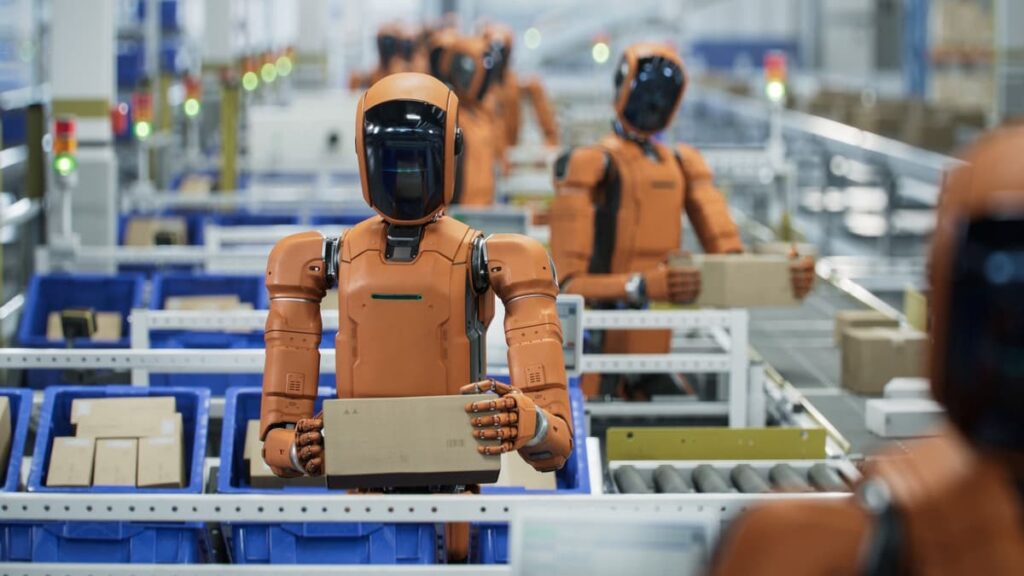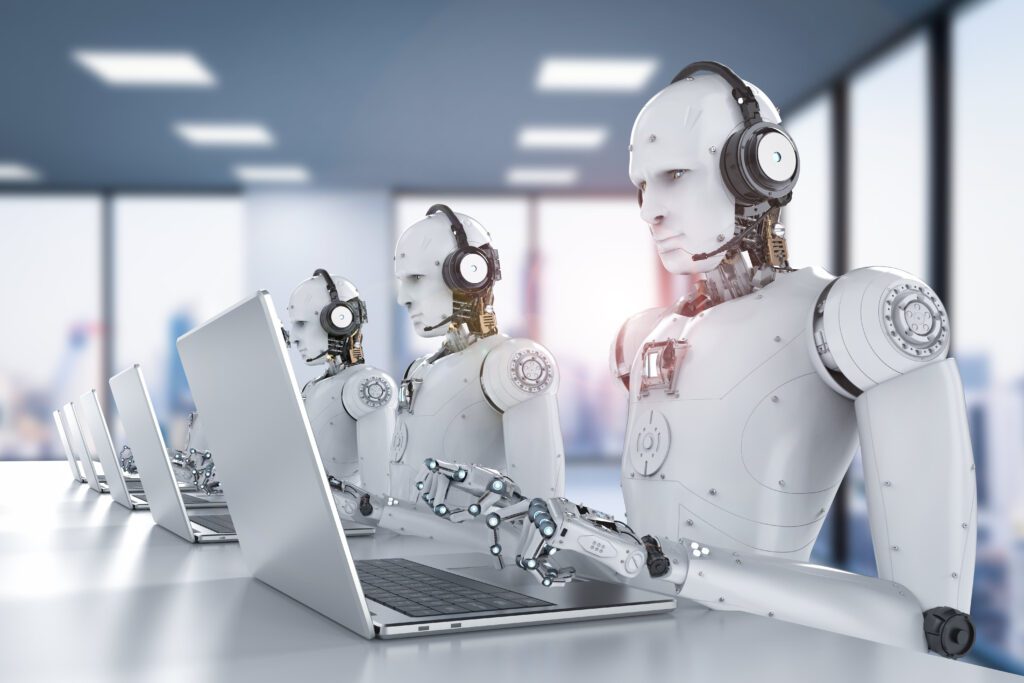Memory-Mimicking Robots are transforming the way industries operate. Unlike traditional machines that rely on pre-programmed instructions, these advanced robots can remember past actions, learn from them, and adjust to new situations. This breakthrough technology is reshaping manufacturing, logistics, quality control, and many other industrial processes, creating new opportunities for efficiency and productivity.
The concept of robots that mimic memory allows industries to achieve tasks more quickly, with fewer errors, and at lower costs. By learning from experience, memory-mimicking robots are bridging the gap between human intelligence and mechanical precision.
How Memory-Mimicking Robots Work
Memory-Mimicking Robots are powered by artificial intelligence systems that store and recall past actions. Unlike traditional robots that repeat tasks mechanically, memory-mimicking robots can analyze previous operations, identify patterns, and optimize their performance over time.

At the core of these robots is a form of “machine memory.” This memory enables the robots to remember sequences of tasks, adapt to environmental changes, and improve efficiency without continuous human guidance. For instance, a robot on an assembly line can learn the best way to handle fragile components by remembering which techniques previously caused errors and which approaches improved output.
The AI algorithms also allow these robots to simulate trial-and-error learning. They can try different methods, evaluate the results, and adopt the most effective strategy. This ability to learn dynamically makes them far more adaptable than conventional robots.

Key Benefits of Memory-Mimicking Robots
Memory-Mimicking Robots offer several advantages for industrial operations. Their unique combination of learning capability and automation provides tangible improvements in productivity, quality, and flexibility.
Enhanced Productivity
By remembering previous experiences, these robots can complete tasks more efficiently. They require less supervision and can handle variations in production without the need for constant human intervention. This leads to faster workflows and higher output, making production lines more agile and responsive to changes.
Reduced Errors
Mistakes in industrial processes are expensive. Memory-Mimicking Robots learn from past errors and adjust their actions to prevent repetition. Over time, this reduces product defects, lowers waste, and ensures consistent quality.
Cost Efficiency
While memory-mimicking robots may require a higher initial investment, they provide long-term savings. By minimizing errors, optimizing operations, and reducing reliance on manual supervision, businesses can significantly lower operational costs.
Operational Flexibility
Industries often face unpredictable challenges, such as changes in product designs or supply chain disruptions. Memory-Mimicking Robots can adapt to these changes seamlessly. Their ability to adjust in real time ensures that operations continue smoothly, even in dynamic environments.

Real-World Applications
The practical applications of memory-mimicking robots are vast. Their ability to learn and adapt makes them suitable for multiple industries and tasks.
Manufacturing
In manufacturing, memory-mimicking robots can improve assembly line operations. They learn the most efficient order for assembling components, adjust their speed according to workload, and maintain precision even with complex tasks. These robots reduce downtime and improve the overall quality of production.
Logistics and Warehousing
In warehouses, memory-mimicking robots can learn optimal paths for moving goods, manage inventory more efficiently, and avoid obstacles. Over time, they reduce delays, increase throughput, and optimize storage space.
Quality Control
Memory-Mimicking Robots can enhance quality control processes. By remembering patterns in previous defects, they can identify potential issues early and adjust workflows to prevent errors. This improves product quality and minimizes customer complaints.
Collaborative Work Environments
These robots can work alongside human employees effectively. They understand workflows, anticipate human actions, and adjust their behavior accordingly. This not only improves efficiency but also enhances safety in shared workspaces.
How Memory Improves Industrial Efficiency
The ability to mimic memory is what sets these robots apart from conventional automation systems. Traditional robots follow pre-set instructions, which limits their adaptability. Memory-mimicking robots, on the other hand, continuously learn and improve, offering several efficiency advantages:
- Faster Learning Curve: Robots can master new tasks quickly by drawing on previous experiences.
- Adaptive Problem Solving: They can handle unexpected challenges, such as missing parts or design changes.
- Reduced Supervision: Human oversight is minimized because robots can correct mistakes and optimize performance independently.
- Consistent Performance: Memory ensures tasks are completed uniformly, even in complex or repetitive processes.
Challenges to Consider
While the benefits are substantial, there are challenges to implementing memory-mimicking robots:
- High Initial Investment
The advanced AI and robotics technology required can be costly. However, efficiency gains and long-term savings often outweigh the upfront expense. - Data Management
Memory-mimicking robots generate large amounts of operational data. Companies must manage this data carefully to maintain accuracy and security. - Integration Complexity
Introducing these robots into existing workflows may require changes to processes, employee training, and IT infrastructure. - Ethical Considerations
Increased automation raises questions about workforce displacement, accountability, and the ethical use of AI. Companies must address these concerns responsibly.
The Future of Memory-Mimicking Robots
The future of memory-mimicking robots looks promising. As AI and robotics continue to advance, these machines will become smarter, more adaptable, and more affordable. Within the next decade, many industries are expected to rely heavily on memory-enabled robots to enhance productivity and competitiveness.
Beyond manufacturing and logistics, these robots are likely to find applications in healthcare, agriculture, construction, and service industries. Surgical robots with memory capabilities could perform complex procedures with improved precision. Agricultural robots could learn optimal planting and harvesting strategies. Construction robots could adjust to changing site conditions without human intervention.
The ability of these robots to learn from experience and adapt autonomously opens up a wide range of possibilities for industrial innovation.

Steps for Businesses to Implement Memory-Mimicking Robots
For companies looking to adopt memory-mimicking robots, careful planning is essential. Here are steps to ensure a successful implementation:
- Assess Needs
Identify processes where adaptive automation can bring the most value. Focus on areas where efficiency, accuracy, and adaptability are critical. - Plan Integration
Work with technology providers to integrate robots into existing workflows. Ensure that infrastructure and systems are compatible with new technology. - Train Staff
Employees should understand how to collaborate with memory-mimicking robots. Training helps teams leverage the full potential of these machines. - Monitor Performance
Regularly evaluate the robots’ performance. Track efficiency improvements, error reduction, and cost savings to measure success. - Scale Gradually
Start with pilot projects to test the technology. Gradually expand deployment as teams gain confidence and processes are optimized.
Benefits Beyond Efficiency
Memory-Mimicking Robots don’t just improve efficiency—they also enhance overall business operations:
- Innovation: By automating routine tasks, businesses can redirect human talent toward creative problem-solving and innovation.
- Workplace Safety: Robots handle repetitive, heavy, or dangerous tasks, reducing workplace injuries.
- Sustainability: Optimized processes reduce energy usage, waste, and material consumption, contributing to greener operations.
Conclusion
Memory-Mimicking Robots represent a major leap forward in industrial automation. Their ability to learn from experience, adapt to changing conditions, and optimize processes provides significant advantages in productivity, quality, and cost efficiency.
While challenges like integration complexity, data management, and ethical considerations exist, careful planning and responsible implementation can maximize benefits. Businesses that adopt memory-mimicking robots early are likely to gain a competitive edge, transforming how products are manufactured, stored, and delivered.
These robots are more than just advanced machines—they are a step toward smarter, more adaptive industries where human creativity and robotic precision work together seamlessly. Memory-Mimicking Robots are ushering in a new era of industrial efficiency, and companies that embrace this technology are preparing for a future where automation is not just fast, but intelligent.
Do follow UAE Stories on Instagram
Read Next – Fiber Optic Cables Could Offer Early Warning for Earthquakes














